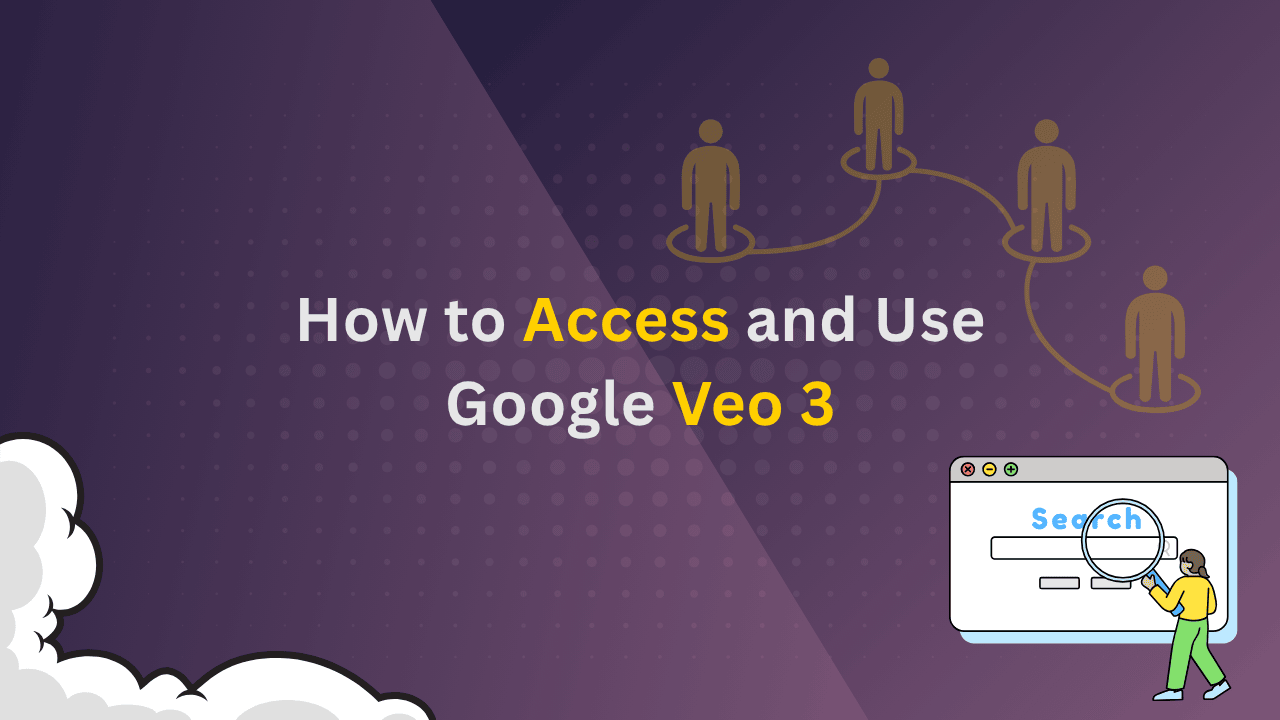How to Access and Use Google Veo 3 (Step-by-Step Tutorial)
Google has always been at the forefront of innovation, and with the introduction of Google Veo 3, it continues to push the boundaries of AI-powered video generation. Built for creators, marketers, educators, and storytellers, Veo 3 is Google’s most advanced video generation tool to date — capable of producing high-quality cinematic videos from simple text prompts.
In this detailed tutorial, we’ll guide you through how to access Google Veo 3, how to use its features step by step, and explore tips and use cases to get the most out of this powerful tool.
What is Google Veo 3?
Google Veo 3 is the latest iteration of Google’s AI video generation platform. It uses deep learning and generative AI models to create high-quality, realistic, and dynamic videos from text, image, or audio prompts. Unlike traditional video editing tools, Veo doesn’t require any technical skills — just input your idea, and Veo brings it to life.
Veo 3 supports:
- 4K resolution
- Realistic human motion
- Cinematic camera movements
- Complex scene understanding
- Multi-style rendering (realistic, animated, surreal, etc.)
This tool was first introduced at Google I/O 2024 and is currently in limited access via waitlist through Google Labs.
Step-by-Step Guide: How to Access Google Veo 3
Step 1: Visit Google Labs
Go to labs.google — the official platform for experimental Google AI tools.
Step 2: Search for “Veo”
Scroll through the available experiments or use the search bar to find Google Veo. It will usually appear with a preview video or description titled “Video generation powered by AI.”
Step 3: Join the Waitlist
If you haven’t already received an invite:
- Click on “Join waitlist”
- Sign in with your Google Account
- Accept terms & conditions
Pro Tip: Use your Gmail linked with YouTube or Google Workspace for faster approval.
Step 4: Wait for Invite
Once approved (this may take from a few hours to several days), you'll receive an email with access instructions to Google Veo’s private workspace.
Step 5: Log In to Google Veo Studio
Visit the unique Veo Studio link from your invite, log in using your approved Gmail. You’ll land on the Veo Dashboard with options like: “Create New Project,” “Explore Styles,” and “My Gallery.”
How to Use Google Veo 3: Step-by-Step Tutorial
Step 1: Start a New Project
Click on “Create New Video”. Choose from:
- Prompt Style: Text, Text + Image, or Audio Prompt
- Video Duration: 5s, 10s, 30s (depending on access level)
- Style Preset: Cinematic, Animation, Claymation, Surreal, Realistic, etc.
Step 2: Write Your Prompt
Describe your video idea clearly. Example:
“A futuristic city skyline at sunset with flying cars, cinematic camera movement, and glowing neon lights.”
You can also add camera angles, lighting styles, and emotional mood cues.
Step 3 (Optional): Add a Reference Image
Attach an image to guide the AI's understanding of your desired style, layout, or color scheme.
Step 4: Configure Video Settings
- Resolution: 1080p or 4K (if unlocked)
- Aspect Ratio: 16:9, 9:16, 1:1
- Length: Short for reels, longer for YouTube or presentations
Step 5: Let the AI Work
Click “Generate” and wait for a few seconds to minutes. Veo uses cloud computing, so ensure stable internet.
Step 6: Review & Download
Once your video is ready:
- Preview the video
- Edit or regenerate if needed
- Click Download to save the video (MP4 format)
Best Practices for Writing Veo Prompts
Use clear and descriptive phrases to improve output quality:
- Scene: “A forest with glowing mushrooms at night”
- Motion: “camera slowly zooms into the center”
- Mood: “a lonely robot walking in a post-apocalyptic desert, sad and slow”
Use Cases for Google Veo 3
| Use Case | Description |
|---|---|
| Content Creators | Make shorts, music videos, or intros without filming |
| Marketers | Create product teasers, brand videos, or ads |
| Educators | Visualize historical events or science concepts |
| Game Designers | Prototype cinematic cutscenes |
| Storytellers | Bring fiction, poems, or scripts to life visually |
Is Google Veo 3 Free?
Yes, for now, Veo is free during its beta phase. However:
- Access is limited to approved users
- Premium plans may launch later
- Commercial use may need licensing
Google Veo 3 vs Competitors
| Feature | Google Veo 3 | OpenAI Sora | Runway Gen-3 | Pika Labs |
|---|---|---|---|---|
| Output Quality | 4K, Cinematic | 1080p–4K | 1080p | 720p–1080p |
| Input Types | Text, Image | Text | Text, Image | Text, Image |
| Realism | ⭐⭐⭐⭐ | ⭐⭐⭐⭐ | ⭐⭐⭐ | ⭐⭐ |
| Ease of Use | Beginner Friendly | Limited Access | User Friendly | Good for short loops |
Final Thoughts
Google Veo 3 is a game-changing tool in the world of AI video generation. Whether you're a digital creator or a business looking to enhance storytelling, Veo makes it easier than ever to turn imagination into video — no camera, crew, or expensive software required.
As the tool continues to improve, early users have a great chance to learn, explore, and innovate using Veo’s advanced features.
FAQs
Is Google Veo available to everyone?
Not yet. You need to sign up for the waitlist via labs.google.
Can I use Veo videos for commercial purposes?
Not currently. Veo is in an experimental phase. Always check Google’s terms before monetizing.
Does Veo 3 support voice prompt input?
Some internal demos do, but the current public version primarily supports text and image prompts.

